This is a free fortnightly newsletter about the New Zealand Net. If you would like to be notified by email when a new edition is published, please contact ZL1NZ.
Browse our Newsletter Archive and List of Net Tips.
Featured key
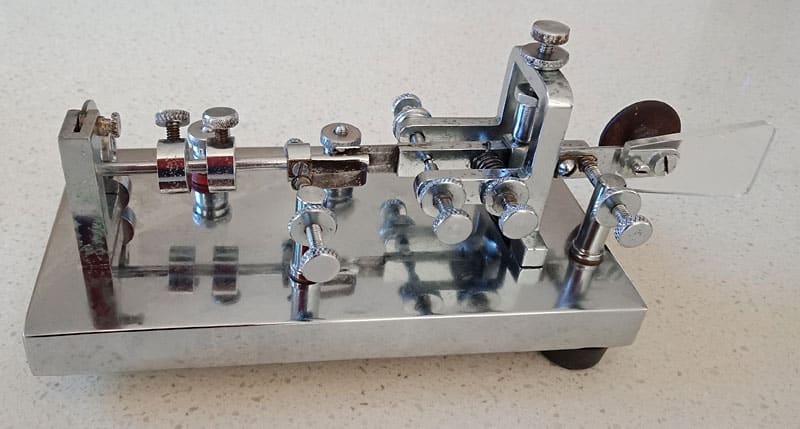
Supreme bug looking good with its re-chromed base. Photo: VK2IXV
By Herman VK2IXV
Supreme bugs, made by Eric Andrew Sorensen ZL3OQ (1909-1990), are well-made and robust keys with no maker’s markings. They are very easy to recognize as they look a bit like a Vibroplex Original without a circuit closer. They always have a Perspex (transparent thermoplastic) dot paddle and diamond-pattern knurling on their nuts. Their hardware is chrome-plated brass, except for the 16cm x 8.5cm base, which is chrome-plated steel. The bug weighs a massive 2.2 kg.
Supreme bugs have either two or three pendulum weights. Other slight variations are in the style of the bug’s mainframe: the bug with the heavier mainframe has an enclosed pivot shaft, while the other has not. Also, the thickness of the pendulum shaft differs slightly.
Using his hand-built machines from about 1953 to 1989, Eric made many straight keys and bugs, which were marketed by Tricity House in Christchurch under the name “Supreme”. Tricity House, mainly staffed by radio amateurs, was situated in central Christchurch City, where they sold and repaired small domestic appliances and wireless sets.
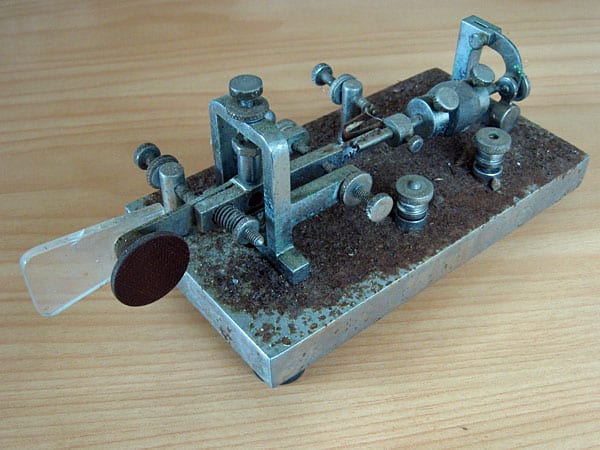
The bug as received included a lump of lead between the two weights and plenty of genuine New Zealand rust on the base.
Even with both weights positioned at the far end of the pendulum, I found the dots too fast. A machinist friend made an extra weight and I can now send Morse on this bug at around 18-20 wpm.
All in all, a wonderful bug for both a collector and user.
Neil responds: I am so glad to see this bug looking shiny. I rescued it from a shed many years ago, and it looked dreadful. Thanks for putting in the effort Herman.
* If you have an interesting key for this feature, please send me a nice clear photo and a few words describing it.
Quick notes

If you want one of these apartments in Brighton, England, you’ll need to be fast. 🙂
(They’re in the Queens Road Quadrant.)
Straight Key Night on 12 June attracted at least nine NZ Net operators (judging by my log). Thanks everyone who participated. The next SKN will be on 4 December.
FISTS Down Under’s QSO Party is every Friday evening from 1100 to 1200 UTC on 80m. Exchange name, RST and FISTS number. Then either move on, or stop for a chat.
Congratulations to Paul ZL1AJY who led his ZL1XH Branch 77 Te Aroha team to another comprehensive win in the 2022 Jock White Field Day. The team has entered the contest four times, and posted the top score in the Northern Division – and in the whole country – every time. This year, they did it with just one CW operator (Paul) in a team of three. I feel tired just imagining it.
Grant ZL2GD was part of the ZL2RR North Canterbury Branch 68 team which also did well, winning the Midland Division.
The Memorial Contest will be held next weekend, 1st and 2nd July, from 0800 to 1100 UTC on 80m. The contest has been held every year since 1946 to commemorate those New Zealand amateur radio operators who lost their lives in World War 2. CW contacts are worth twice as many points as SSB, so you know what to do! I am pleased to see that, although digital logs are preferred, paper logs are still accepted.
Peter ZL1PX wrote about NZ Net in the latest edition (May/June 2022) of Break-In magazine. Thanks Peter, good article. The Break-In editor is keen to get more CW articles so if you have an idea, why not contact him (the email address is in the magazine).
Another bit of coverage for NZ Net is in the latest edition of the CW Ops newsletter Solid Copy, relating to the CW Ops annual award for advancing the art of CW.
The FISTS Down Under committee will be holding a Zoom-based forum on 2 July at 0200 UTC, prior to the group’s AGM. FISTS members can register to participate by contacting VK3QB.
Who is this NZ Netter?

This photo from the 1980s features an operator who can be heard on the NZ Net. If you think you know who it is – or just want to make a guess – send me an email (no radiograms for this one, please) containing the person’s name and/or callsign.
Readers with the correct answer will get, um…, a wonderful feeling of satisfaction – plus a mention in the next NZ Net News!
I need more photos to keep this feature going, so please send me a photo of yourself from at least 20 years ago. Radio-related photos are ideal, but not absolutely necessary. Thanks!
RBN gets make-over, new features

On 16 June the Reverse Beacon Network (RBN) launched an updated website with some new features.
The RBN is a network of stations that listen to the bands and report what stations they hear, including when and how well. The website’s database of past spots allows operators to instantly find what stations (from any given country or zone) have been heard, at what times, and on what frequencies. Operators can also see when they have been spotted, who spotted them, and how loud the contact was.
In 2009, Pete Smith N4ZR, and Felipe Ceglia CT7ANO worked to get the first version of RBN online. The work of Mark Glenn K7MJG on the website and Dave Pascoe KM3T on connecting the servers contributed to RBN as a resource for listening and tracking signals. The new version is the first major upgrade for the site.
As with most upgrades there are some things that will take getting used to but, overall, I think you’ll find RBN is an even better tool than it was.
 I really like the map display at the top of the page, but before I get into that it’s important to note that the settings for a) which spotter stations you wish to monitor, and b) what “DX” stations you want to see displayed, are hidden by default. So, you need to choose Advanced Mode using the button that appears on the right hand side of the page.
I really like the map display at the top of the page, but before I get into that it’s important to note that the settings for a) which spotter stations you wish to monitor, and b) what “DX” stations you want to see displayed, are hidden by default. So, you need to choose Advanced Mode using the button that appears on the right hand side of the page.
I generally set my spotters to “New Zealand” and leave the DX stations unspecified (see image at top). RBN allows you to choose which bands and modes to monitor, and this is now quite easy to see and change.
Unless you’re interested in historical date, I suggest choosing a time window of no more than 1 hour in order to see current propagation. For periods of less than 1 hour, you can choose minutes instead of hours. Here’s a link to my settings.
What’s most useful, I think, are the coloured lines that appear on the map, indicating which signals were heard on which bands in the most recent time period. But be aware that all signals are shown as short path since RBN has no way to detect which path was being heard. Also, the paths may not be an accurate representation of the true short path. But isn’t it great to be able to see at a glance not just which bands “should” be open to which regions (as predicted by VOACAP, for example), but which signals are actually being heard and on which bands?
RBN has an option to compare your signal with those of other stations, in near real time, or look at historical data. If you wonder how your signal compared to others’ during a previous contest, the website’s Signal Comparison Tool will provide real, quantitative data. For an instant report, query what stations you want to compare, based on signals heard by a given reverse beacon on a certain band at a certain time.
If you visit the RBN website, you can find a guide to the new features under the ‘About’ tab.
There is also a Facebook Group for RBN users.
Audio challenge
David ZL2WT made the following recording in New Zealand 21 years ago. What organisation operated this station?
You can send me your answer via radiogram or email.
Answer to previous Audio Challenge:
The Morse audio was from the lyrics to Don’t Dream It’s Over, written by Neil Finn and a hit record for Crowded House. Correct answers were received from ZL1ANY, ZL1BWG, ZL2GVA and ZL3TK.
Morse musings
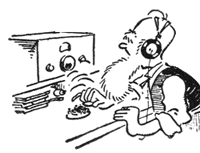
The opinion of ZL1NZ
I find this all a bit strange.
To me, copying means writing it down or typing it. So maybe “head copy” should be “head reading.” But, regardless of what we call it, why is it such a big deal for so many newer ops?
If you’re trying to pass a test, or receive a radiogram, you must copy what you hear. And surely that’s not so difficult at speeds of 20 wpm or a little more, using paper and pencil, and a good deal faster than that if you’re a good typist.
From what I’ve read, the very high speed operators prefer to head copy rather than type, but they have moved way past what most of us will achieve, hearing not just characters, then whole words and eventually common phrases. Some of these talented operators are on a different plane altogether, hearing ideas and concepts without even processing the words involved. Incredible.
Getting back to the sedate speeds of a typical ham, I “read” Morse in my head during ragchews (why waste effort writing down things I don’t need to keep), but I don’t see any shame in “copying” Morse if that’s what an operator finds to be easier. And it’s a great skill for anyone who wants to handle traffic.
What do you think?
Cartoon: Gildersleeve
Video: Telegram for America (1956)
This film about Western Union includes some really interesting examples of automation – and even early fax machines.
The telegram era came to a quiet end in the USA in 2006, when Western Union announced it had delivered its final telegram.
Net tip: Priority check-in
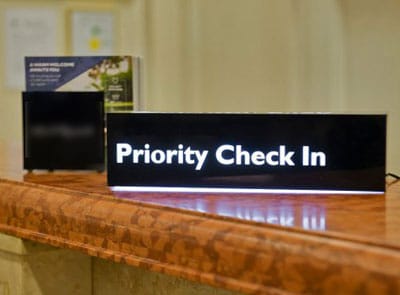 Even if you don’t fly first class, you can still qualify for priority check-in on the NZ Net!
Even if you don’t fly first class, you can still qualify for priority check-in on the NZ Net!
Your net control stations like to keep the net running briskly and one way we do this is by sending stations off-frequency to clear traffic. We only do this during the first five minutes of the net, however. Otherwise, there’s too much risk that the stations will not be back on net frequency by the time we’re ready for any QNCs and the net closing.
You can help make the net run efficiently by following these guidelines.
During the first five minutes of the net, check in only if one or more of the following applies:
– you have traffic to send,
– you know there is traffic for you to receive,
– you do not hear any other stations trying to check in.
After 2105 hours, all stations are welcome to check in.
The net always accepts traffic, so if you can’t get in before 2105, please list your traffic whenever you check in.
Advertising archive
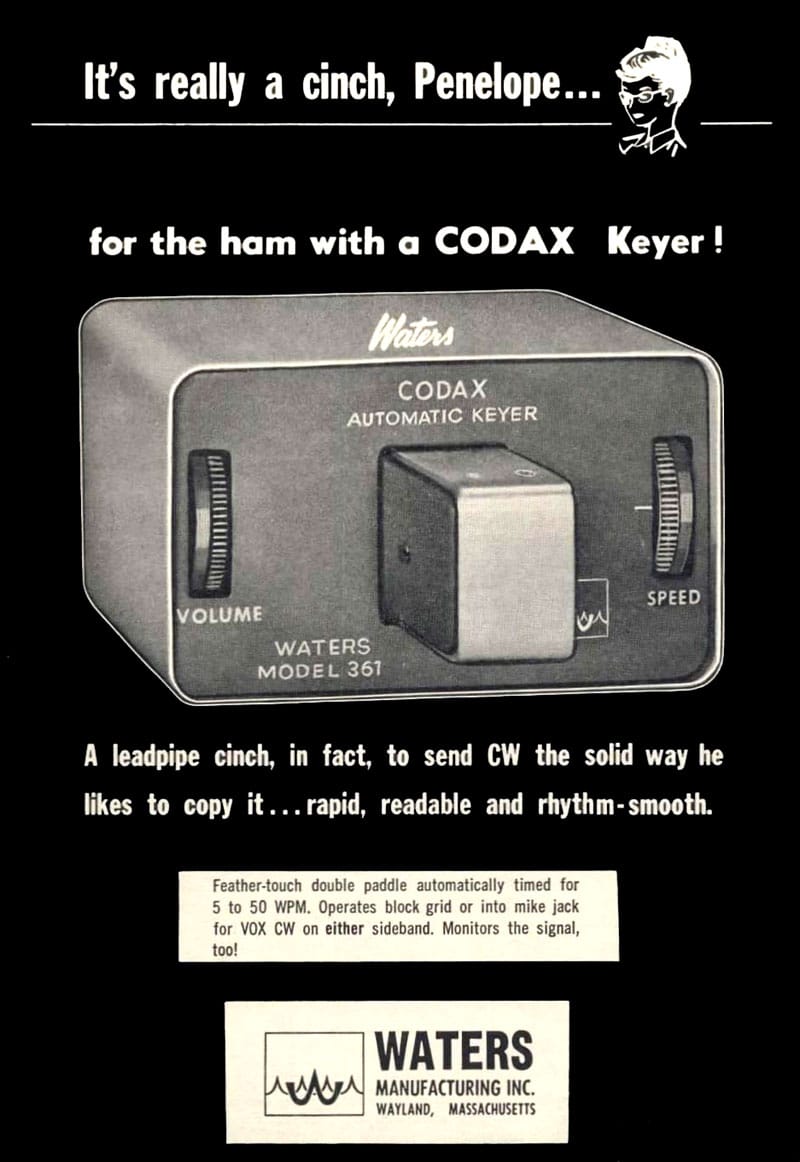
Sidetone-generated CW anyone? Not a good idea, as Collins discovered with the 32S-1 transmitter! 73 magazine, 1967
Suggestions?
If you have suggestions on how to make the NZ Net better, or things you’d like to see covered in these updates, please contact ZL1NZ. You might even like to write something for the newsletter.
Thanks for reading, and I hope to hear you soon on the NZ Net!
—
Neil Sanderson ZL1NZ, Net Manager
New Zealand Net (NZ NET)
3535.0 kHz at 9pm NZT Mon-Fri



